#Innovation-Democratization
Explore tagged Tumblr posts
Text
NAB 2025 Showcase: AI and Cloud Computing Reshape the Future of Broadcasting
The NAB Show 2025 (April 5-9) arrives at a watershed moment as revolutionary technologies reshape the foundations of broadcasting. Under the compelling theme "Massive Narratives," this landmark event illuminates the extraordinary convergence of artificial intelligence, creator economy dynamics, cutting-edge sports technology, streaming innovations, and cloud virtualization. Industry leaders and innovators gather to showcase groundbreaking advances that promise to redefine content creation, production, and distribution across the entire broadcasting ecosystem.
The Evolution of AI in Broadcasting
The integration of generative AI throughout the content creation pipeline heralds an unprecedented transformation in broadcasting technology. This technological revolution extends far beyond simple automation, fundamentally altering how content creators conceptualize, produce, and deliver their work. Industry leaders prepare to unveil comprehensive solutions that revolutionize workflows from initial conceptualization through final delivery, marking a decisive shift toward AI-enhanced creativity.
Adobe stands poised to transform its Creative Cloud suite through sophisticated AI integration. Their revolutionary GenStudio platform represents a quantum leap in AI-driven content creation, incorporating advanced machine learning algorithms that analyze creative patterns and suggest innovative approaches to content development. Their latest Premiere Pro AI Pro introduces groundbreaking capabilities: advanced multilingual subtitle generation with emotional context understanding, intuitive AI-driven editing suggestions that dynamically match cutting patterns to scene emotions, and seamless integration with third-party tools through an innovative AI-powered plugin architecture.
The subtitle generation system particularly impresses with its ability to analyze speakers' emotional states and adjust text formatting accordingly, ensuring that written content accurately reflects the nuanced emotional context of spoken dialogue. This breakthrough in natural language processing promises to revolutionize content accessibility while preserving the emotional integrity of original performances.
Through their experimental initiatives—Project Scene and Project Motion—Adobe demonstrates unwavering commitment to expanding the horizons of AI-assisted creativity, particularly in the demanding realms of 3D content creation and animation. Project Scene introduces sophisticated environmental generation capabilities, allowing creators to describe complex scenes verbally and watch as AI transforms their descriptions into detailed 3D environments. Project Motion pushes boundaries further by implementing advanced motion synthesis algorithms that can generate realistic character animations from simple text descriptions or rough sketches.
Cloud-native production architectures are rapidly reshaping the industry landscape, as prominent vendors unveil increasingly sophisticated solutions. Leading this transformation, TVU Networks introduces their next-generation cloud microservice-based ecosystem. At the heart of this innovation lies their flagship platform, TVU Search, which represents a significant leap forward in content management capabilities. This sophisticated system seamlessly combines multimodal AI capabilities—integrating image, speech, and action recognition with advanced summarization features. Complementing this advancement, TVU Producer AI now incorporates groundbreaking automatic script generation functionality, efficiently transforming brief oral descriptions into comprehensive production plans.
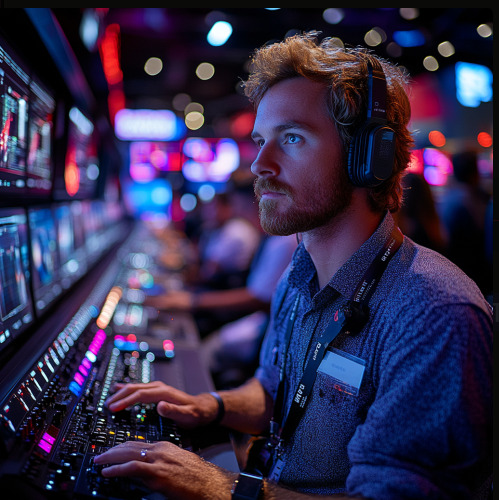
Their enhanced cloud ecosystem with hundreds of microservices enables fluid cloud-based workflows, allowing seamless collaboration between remote team members while maintaining broadcast-quality standards. The platform's intelligent content analysis capabilities can automatically identify key moments in live broadcasts, generate metadata tags, and create time-coded transcripts in real-time, significantly streamlining post-production workflows.
The company's revolutionary "cloud-edge-end" architecture marks a significant advancement in remote production capabilities, delivering reduced latency alongside enhanced reliability. This hybrid approach optimally balances processing loads between cloud services and edge computing nodes, ensuring consistent performance even in challenging network conditions. The system's adaptive routing algorithms continuously monitor network conditions and automatically adjust data paths to maintain optimal performance.
Virtual Production Breakthroughs
SONY continues to push technological boundaries through several groundbreaking innovations. Their VENICE 7 camera system delivers stunning 8K HDR at 120fps with sophisticated AI depth prediction, while the Crystal LED XR Studio introduces a revolutionary mobile control unit enabling real-time virtual scene adjustments through AR glasses. The VENICE 7's advanced sensor technology combines with real-time AI processing to achieve unprecedented dynamic range and color accuracy, while its integrated depth prediction capabilities streamline compositing workflows in virtual production environments.
The Crystal LED XR Studio's mobile control unit represents a significant advance in virtual production technology, allowing directors and cinematographers to visualize and adjust virtual elements in real-time through AR glasses. This intuitive interface enables creative professionals to manipulate virtual environments as naturally as they would physical sets, significantly reducing the technical barriers traditionally associated with virtual production.
Their latest visualization marvel, Torchlight—developed through strategic collaboration with Epic Games—underscores SONY's dedication to creating comprehensive solutions that seamlessly bridge virtual and physical production environments. Torchlight introduces revolutionary real-time lighting simulation capabilities, allowing cinematographers to preview complex lighting setups instantly and adjust virtual light sources with unprecedented precision.
Building on their successful Paris Olympics implementation, Vizrt prepares to showcase enhanced AR solutions, featuring sophisticated real-time rendering capabilities for sports broadcasting, photorealistic virtual set solutions, and innovative tools for creating dynamic interactive graphical elements in live productions. Their latest virtual set technology incorporates advanced physical simulation capabilities, ensuring that virtual elements interact naturally with real-world objects and talent.
5G and Next-Generation Transmission
TVU Networks advances the frontier of 5G broadcast technology through their TVU 5G 2.0 platform, which masterfully integrates 3GPP Release 17 modem technology, sophisticated Dynamic Spectrum Sharing support, enhanced millimeter wave communication capabilities, and ultra-low latency remote production features. The platform's intelligent network management system automatically optimizes transmission parameters based on real-time network conditions, ensuring reliable high-quality broadcasts even in challenging environments.
The system's enhanced millimeter wave capabilities represent a significant breakthrough in mobile broadcasting, enabling ultra-high-bandwidth transmission while maintaining robust connectivity through advanced beamforming techniques. The integration of Dynamic Spectrum Sharing technology allows broadcasters to maximize spectrum efficiency while ensuring seamless compatibility with existing infrastructure.
Blackmagic Design furthers its mission of democratizing professional broadcasting technology through an impressive array of innovations: the URSA Mini Pro 8K Plus with sophisticated AI-driven noise reduction, ATEM Mini Extreme HDR featuring integrated AI color correction, and enhanced cloud production tools that elegantly bridge traditional hardware with modern cloud workflows. The URSA Mini Pro 8K Plus particularly impresses with its revolutionary sensor design, which combines high resolution with exceptional low-light performance and dynamic range.
The ATEM Mini Extreme HDR introduces sophisticated color management capabilities powered by machine learning algorithms that analyze and optimize image quality in real-time. This technology enables smaller production teams to achieve professional-grade results without requiring extensive color correction expertise. The system's AI-driven tools automatically adjust parameters such as white balance, exposure, and color grading while maintaining natural-looking results across diverse shooting conditions.
Automation and Control Systems
ROSS Video revolutionizes broadcast automation through their comprehensive VCC AI Edition, which features automatic news hotspot identification and sophisticated switching plan generation. Their ROSS Control 2.0 introduces advanced voice interaction capabilities for natural language device control, complemented by enhanced automation tools designed specifically for "unmanned" production scenarios.
The system's AI-driven hotspot identification capability represents a significant advancement in automated news production, using advanced computer vision and natural language processing to identify and prioritize newsworthy moments in real-time. This technology enables production teams to respond quickly to developing stories while maintaining high production values.
ROSS Control 2.0's natural language interface marks a departure from traditional automation systems, allowing operators to control complex broadcast systems through intuitive voice commands. The system's contextual understanding capabilities enable it to interpret complex instructions and execute multiple actions while maintaining precise timing and synchronization.
Industry Implications and Challenges
The broadcasting landscape faces several technical hurdles as it adapts to these revolutionary changes. Standard fragmentation amid rapidly evolving 5G transmission technologies raises compatibility concerns, particularly as broadcasters navigate the transition between existing infrastructure and next-generation systems. The industry must develop robust standardization frameworks to ensure interoperability while maintaining the pace of innovation.
Cloud workflow security demands increasingly sophisticated measures within multi-cloud architectures, as broadcasters balance the benefits of distributed processing with the need to protect valuable content and sensitive production data. The expanding role of AI in content creation presents complex legal and ethical considerations, particularly regarding intellectual property rights and creative attribution in AI-assisted productions.
The innovations unveiled at NAB Show 2025 accelerate several industry trends: the democratization of professional tools brings advanced capabilities to smaller producers, enhanced cloud and 5G capabilities enable more distributed workflows, and sustainable broadcasting solutions gain increasing prominence. These developments promise to reshape the competitive landscape, enabling smaller organizations to produce content at previously unattainable quality levels.
Future Outlook
The broadcasting industry embraces an integrated, AI-driven future where traditional broadcasting boundaries increasingly blur with digital content creation. Essential developments include comprehensive AI integration across production workflows, sophisticated cloud-native solutions with enhanced reliability, environmentally conscious broadcasting innovations, and accessibility of professional-grade features for smaller producers.
The convergence of AI and cloud technologies continues to drive innovation in content creation and distribution, while advances in virtual production and automation fundamentally reshape traditional workflows. These technological developments enable new forms of creative expression while streamlining production processes and reducing operational costs.
Conclusion
NAB Show 2025 represents a pivotal moment in broadcasting technology, marking the transition from isolated tool innovations to comprehensive ecosystem transformation. The powerful convergence of AI, cloud technology, and 5G creates unprecedented possibilities for content creation and distribution, while advances in virtual production and automation fundamentally reshape traditional workflows.
Looking beyond NAB Show 2025, the broadcasting industry clearly enters a new era where technology not only enhances existing capabilities but fundamentally transforms content creation, production, and delivery methods. The groundbreaking innovations showcased at this year's event will undoubtedly influence technological advancement in broadcasting for years to come.
For companies seeking to maintain competitive advantage in this dynamic landscape, the technologies and trends showcased at NAB Show 2025 deserve careful consideration—they represent not merely the future of broadcasting, but the evolution of content creation and distribution as a whole. Success in this rapidly evolving environment will require organizations to embrace these transformative technologies while developing new workflows and creative approaches that leverage their full potential.
0 notes
Text

Megyn Kelly Blames Dems for Elon Musk’s Reported White House Exit, Says It’s ‘Sad’ He’s Not Embraced Like Einstein or Edison
Megyn Kelly is disappointed by speculation that Elon Musk’s role in the Trump White House may be coming to an end.
On Wednesday’s episode of The Megyn Kelly Show, she criticized reports from Politico and ABC suggesting that Musk—and his work with DOGE—might not be around much longer, calling the news “sad.” She also expressed surprise that Democrats would celebrate the development.
“I think it’s sad,” Kelly remarked. “Imagine living in the time of Albert Einstein or Thomas Edison, and having them offer to help solve national problems, only to be rejected out of hatred. That’s what the left is doing—saying, ‘We don’t need your brain to help us solve problems.’”
5 notes
·
View notes
Text
From Recurrent Networks to GPT-4: Measuring Algorithmic Progress in Language Models - Technology Org
New Post has been published on https://thedigitalinsider.com/from-recurrent-networks-to-gpt-4-measuring-algorithmic-progress-in-language-models-technology-org/
From Recurrent Networks to GPT-4: Measuring Algorithmic Progress in Language Models - Technology Org
In 2012, the best language models were small recurrent networks that struggled to form coherent sentences. Fast forward to today, and large language models like GPT-4 outperform most students on the SAT. How has this rapid progress been possible?
Image credit: MIT CSAIL
In a new paper, researchers from Epoch, MIT FutureTech, and Northeastern University set out to shed light on this question. Their research breaks down the drivers of progress in language models into two factors: scaling up the amount of compute used to train language models, and algorithmic innovations. In doing so, they perform the most extensive analysis of algorithmic progress in language models to date.
Their findings show that due to algorithmic improvements, the compute required to train a language model to a certain level of performance has been halving roughly every 8 months. “This result is crucial for understanding both historical and future progress in language models,” says Anson Ho, one of the two lead authors of the paper. “While scaling compute has been crucial, it’s only part of the puzzle. To get the full picture you need to consider algorithmic progress as well.”
The paper’s methodology is inspired by “neural scaling laws”: mathematical relationships that predict language model performance given certain quantities of compute, training data, or language model parameters. By compiling a dataset of over 200 language models since 2012, the authors fit a modified neural scaling law that accounts for algorithmic improvements over time.
Based on this fitted model, the authors do a performance attribution analysis, finding that scaling compute has been more important than algorithmic innovations for improved performance in language modeling. In fact, they find that the relative importance of algorithmic improvements has decreased over time. “This doesn’t necessarily imply that algorithmic innovations have been slowing down,” says Tamay Besiroglu, who also co-led the paper.
“Our preferred explanation is that algorithmic progress has remained at a roughly constant rate, but compute has been scaled up substantially, making the former seem relatively less important.” The authors’ calculations support this framing, where they find an acceleration in compute growth, but no evidence of a speedup or slowdown in algorithmic improvements.
By modifying the model slightly, they also quantified the significance of a key innovation in the history of machine learning: the Transformer, which has become the dominant language model architecture since its introduction in 2017. The authors find that the efficiency gains offered by the Transformer correspond to almost two years of algorithmic progress in the field, underscoring the significance of its invention.
While extensive, the study has several limitations. “One recurring issue we had was the lack of quality data, which can make the model hard to fit,” says Ho. “Our approach also doesn’t measure algorithmic progress on downstream tasks like coding and math problems, which language models can be tuned to perform.”
Despite these shortcomings, their work is a major step forward in understanding the drivers of progress in AI. Their results help shed light about how future developments in AI might play out, with important implications for AI policy. “This work, led by Anson and Tamay, has important implications for the democratization of AI,” said Neil Thompson, a coauthor and Director of MIT FutureTech. “These efficiency improvements mean that each year levels of AI performance that were out of reach become accessible to more users.”
“LLMs have been improving at a breakneck pace in recent years. This paper presents the most thorough analysis to date of the relative contributions of hardware and algorithmic innovations to the progress in LLM performance,” says Open Philanthropy Research Fellow Lukas Finnveden, who was not involved in the paper.
“This is a question that I care about a great deal, since it directly informs what pace of further progress we should expect in the future, which will help society prepare for these advancements. The authors fit a number of statistical models to a large dataset of historical LLM evaluations and use extensive cross-validation to select a model with strong predictive performance. They also provide a good sense of how the results would vary under different reasonable assumptions, by doing many robustness checks. Overall, the results suggest that increases in compute have been and will keep being responsible for the majority of LLM progress as long as compute budgets keep rising by ≥4x per year. However, algorithmic progress is significant and could make up the majority of progress if the pace of increasing investments slows down.”
Written by Rachel Gordon
Source: Massachusetts Institute of Technology
You can offer your link to a page which is relevant to the topic of this post.
#A.I. & Neural Networks news#Accounts#ai#Algorithms#Analysis#approach#architecture#artificial intelligence (AI)#budgets#coding#data#deal#democratization#democratization of AI#Developments#efficiency#explanation#Featured information processing#form#Full#Future#GPT#GPT-4#growth#Hardware#History#how#Innovation#innovations#Invention
4 notes
·
View notes
Text
That’s a lot of people!

Bernie Sanders will always fight for The People.
5K notes
·
View notes
Text
Empowering Innovation with Low-Code/No-Code Platforms: Revolutionizing Software Creation.
Sanjay Kumar Mohindroo Sanjay Kumar Mohindroo. skm.stayingalive.in Explore how low-code/no-code platforms drive innovation. Learn how rapid prototyping, easy customization, and broad access reshape software creation in modern enterprises. #LowCode #NoCode Low-code and no-code platforms let teams build apps fast. They make it easy for non-programmers to craft custom tools. This post explains…
#AI#business#Clear Work#Custom Apps#Democratization#Leadership#Low-Code#News#No-Code#Productivity#Rapid Prototyping#Sanjay Kumar Mohindroo#Software Creation#tech innovation#technology
0 notes
Text
Is Artificial Intelligence (AI) Ruining the Planet—or Saving It?
AI’s Double-Edged Impact: Innovation or Environmental Cost? Have you heard someone say, “AI is destroying the environment” or “Only tech giants can afford to use it”? You’re not alone. These sound bites are making the rounds—and while they come from real concerns, they don’t tell the whole story. I’ve been doing some digging. And what I found was surprising, even to me: AI is actually getting a…
#AIAffordability#AIAndThePlanet#AIForGood#AITools#DigitalInclusion#FallingAICosts#GreenAI#HumanCenteredAI#InnovationWithPurpose#ResponsibleAI#SustainableTech#TechForChange#AI accessibility#AI affordability#AI and climate change#AI and sustainability#AI and the environment#AI efficiency#AI for good#AI innovation#AI market competition#AI misconceptions#AI myths#Artificial Intelligence#cost of AI#democratization of AI#Digital Transformation#environmental impact of AI#ethical AI use#falling AI costs
0 notes
Video
youtube
I Tried DeepSeek for 30 Days and Here's What Happened
#youtube#Chinese AI startup frugal innovation DeepSeek-V3 Mixture-of-Experts architecture open-source AI AI democratization AI efficiency AI performa
0 notes
Text
Quote of the Day- February 17, 2025
#Corruption#Creativity#Democracy#Democratic#Innovation#Inspirational Quotes#Joe Biden#Life#President Joe Biden#Quote of the Day#Quotes#Stop Corruption
0 notes
Text
Is Meta's New AI Art Tool - Revolutionizing Creativity?
Have you ever wondered if artificial intelligence could create art?
This intriguing question leads us to explore Meta's new AI art generator, a tool that promises to revolutionize our understanding of creativity. As technology advances rapidly, this innovative platform is making waves in the digital art world, captivating both artists and tech enthusiasts alike.
The process of using Meta's AI art generator is user-friendly and accessible to everyone. By simply inputting preferences like color schemes and themes, We can witness how quickly it generates stunning artwork. While traditional methods have their charm, AI-generated creations offer fresh perspectives on artistry.
Join us as we delve into the potential impact of this groundbreaking tool!
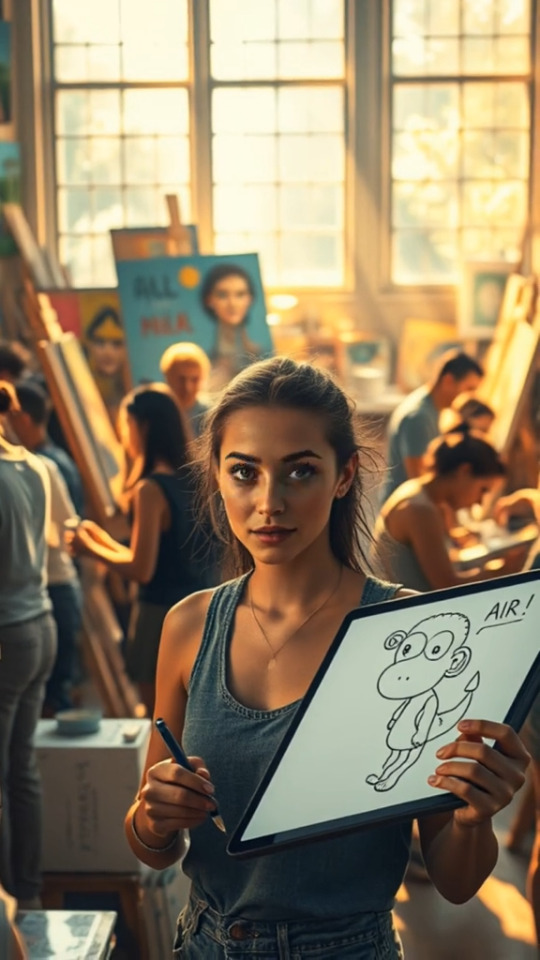
#AIArt #MetaArtGenerator
Level up you art and your creativity with some of the leading Generative AI Platforms or with Meta AI.
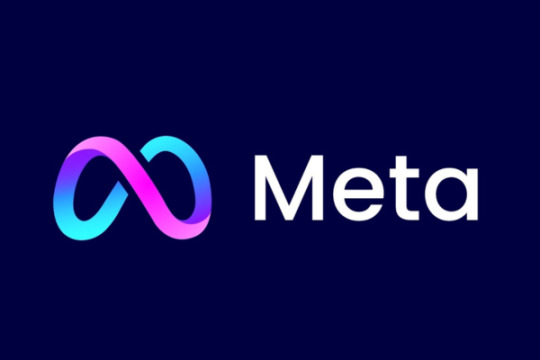
#AI art generator#Meta AI#digital art#creativity tools#art technology#AI creativity#art revolution#digital content creation#artistic innovation#art automation#AI in art#art accessibility#creative process#art challenges#tech enthusiasts#user-friendly design#art styles#color schemes#art experimentation#digital artists#traditional vs AI art#future of creativity#art potential#AI-generated artwork#artistic possibilities#democratizing art#art tools#enhancing creativity#art and technology#AI art trends
0 notes
Text
Blockchain’s Next Innovation: Borderless Funding For Indie Filmmakers

How Blockchain Funding is Transforming Indie Filmmaking The movie industry is one that’s known for its trail-blazing innovations. Although it has only been around for just over a century, the technologies and distribution models for movies have evolved dramatically over the decades. These developments have paved the way for more exciting, immersive and realistic experiences, opening the doors for more directors and actors to showcase their talents on the big screen. Now, with the rise of blockchain technology, the very nature of filmmaking is on the cusp of a major evolution that could entice many new talents into the industry from far-flung countries, and perhaps even end the dominance of movie-making hubs like Hollywood and Bollywood.
To Know More- blockchain technology in filmmaking
#blockchain technology in filmmaking#indie film funding blockchain#tokenization for filmmakers#democratizing indie films#film industry innovations#blockchain impact on cinema#future of movie production#fundraising for indie filmmakers
0 notes
Text
AI is transforming R&D, making cutting-edge innovations more accessible than ever! Dive into Daniel Reitberg’s take on the future of AI democratization. 🚀🤖 #AI #Democratization #Innovation #Research Daniel Reitberg
#artificial intelligence#machine learning#deep learning#technology#robotics#autonomous vehicles#robots#collaborative robots#business#healthcare#innovation#democratization
1 note
·
View note
Text
Building a Data-Driven Culture: Transforming Data into Actionable Insights.
Sanjay Kumar Mohindroo Sanjay Kumar Mohindroo. skm.stayingalive.in Discover how to cultivate a data-driven culture, turning raw data into actionable insights that fuel growth and innovation. #DataDriven #Leadership In today’s rapidly evolving business landscape, the ability to leverage data effectively has become a critical competitive advantage. Organizations that successfully build a…
#Actionable Insights#AI#business#data governance#Data Literacy#Data-Driven Culture#Data-Driven Decision-Making#Democratizing Data#Leadership In Data#News#Organizational Transformation#Sanjay Kumar Mohindroo#technology#Technology innovation
0 notes
Text
Latest AI Regulatory Developments:
As artificial intelligence (AI) continues to transform industries, governments worldwide are responding with evolving regulatory frameworks. These regulatory advancements are shaping how businesses integrate and leverage AI technologies. Understanding these changes and preparing for them is crucial to remain compliant and competitive. Recent Developments in AI Regulation: United Kingdom: The…

View On WordPress
#AI#AI compliance#AI data governance#AI democratic values#AI enforcement#AI ethics#AI for humanity#AI global norms#AI human rights#AI industry standards#AI innovation#AI legislation#AI penalties#AI principles#AI regulation#AI regulatory framework#AI risk classes#AI risk management#AI safety#AI Safety Summit 2023#AI sector-specific guidance#AI transparency requirements#artificial intelligence#artificial intelligence developments#Bletchley Declaration#ChatGPT#China generative AI regulation#Department for Science Innovation and Technology#EU Artificial Intelligence Act#G7 Hiroshima AI Process
1 note
·
View note
Text
"South African entrepreneur Phumla Makhoba is on a mission to solve the “global south housing crisis.” And she’s doing it by using clothing waste.
Her invention, Texiboard, is a material that combines fibers found in textile waste with lime cement to create a durable, affordable, and circular building material.
The result is a textured, white square, almost tile-like, that is created with recycled materials — not emission-generating wood or concrete.
“It can be used to make furniture, flooring, walls, or even your entire home,” Makhoba said in a video for social media account We Got Earth.
The first iterations of the Texiboard included colorful cotton threads that were compressed together, with multiple attempts to remove cracks and seams and perfect the ratios of size, shape, and material mass.
With her design firm, Studio People, Makhoba has been working since 2022 to perfect the TexiBoard.
Makhoba has since created a solid panel, with shredded textile fiber and natural lime cement fully cured. Finally, it can be formed into a full sheet of building material.
Once realized, the Texiboard will confront the estimated 92 million tons of clothing waste generated around the globe each year. But it will also provide safe and stable housing that Makhoba says only 20% of South Africans can afford.
“Growing up, I saw two worlds: one with polished buildings, and one built from scrap,” she said in a video. “I always wondered, why do some people get homes that last and others get homes that leak?”
Now, the Texiboard design is available as an open-source resource, and Makhoba and her team host in-person workshops for locals living in shacks to learn how to build their own supportive and sustainable housing.
“Just having a roof isn’t enough,” Makhoba said. “A real home should protect you from the weather, work for your daily life, and not fall apart in five years.”
Her approach includes a full theory of change. Right now, Studio People is in the input process, building partnerships and funding to scale their operation. From there, they hope to develop a fully sustainable supply chain to manufacture and sell Texiboards and help build affordable housing for people in need.
Once that dream is realized, Makhoba outlines the tangible output of this work: Economically inclusive waste management, circular building materials, green jobs, and a sustainable housing and manufacturing market.
“Informal settlements can be transformed when we all work together,” she shares on the Studio People website. “Texiboard is the seed of innovation that will create updated trade jobs in the innovative building industry.”
Although the Texiboard is still being completely perfected, the goal is to provide a weather-proof, cost-effective, and circular way to house people by democratizing the act of building.
“Our goal is to create an egalitarian and sustainable urban environment, helping shack dwellers and youth out of poverty,” Studio People shared on LinkedIn.
“We empower the underdog, including people and businesses, to co-create solutions in our fight against the housing crisis, unsustainable building materials, and unemployment — one board at a time.”"
-via GoodGoodGood, May 28, 2025
#south africa#africa#entrepreneur#black excellence#black women#textiles#textile waste#clothing#clothing industry#housing#sustainability#circular economy#architecture#sustainable architecture#good news#hope
1K notes
·
View notes
Text
YouTube's AI Tool for Creators to Use Famous Artists' Voices: A Potential Game-Changer
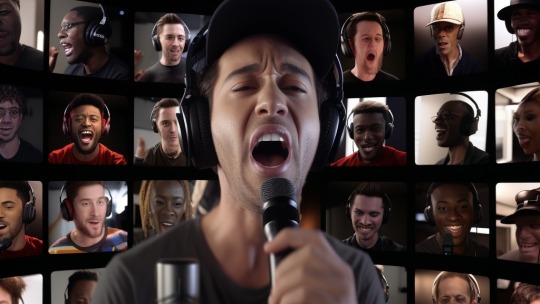
YouTube is reportedly in talks with record labels to develop an AI tool that would allow creators on the platform to use the voices of famous artists. This could have a major impact on the music industry and on the way that content is created on YouTube.
If the tool is developed, it will allow creators to create new songs, videos, and other content using the voices of their favorite artists. This could open up new creative possibilities and make it easier for creators to produce high-quality content.
However, there are also some potential concerns about the use of AI to create music. One concern is that it could lead to copyright infringement. If creators are able to use the voices of famous artists without their permission, it could violate the artists' intellectual property rights.
Another concern is that it could be used to create deepfakes, which are videos or audio recordings that have been manipulated to make it appear as if someone is saying or doing something that they never actually said or did. Deepfakes can be used for malicious purposes, such as spreading misinformation or damaging someone's reputation.
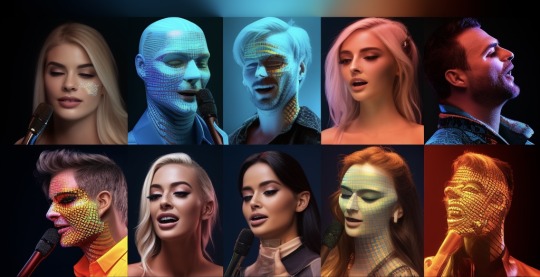
Here are some additional thoughts on the potential impact of this new tool:
It could democratize music creation. By making it easier for anyone to create music with the voices of famous artists, the tool could open up new opportunities for aspiring musicians and creators.
It could lead to new and innovative forms of music. The tool could be used to create new genres of music that would not be possible without AI. For example, creators could combine the voices of different artists to create unique and unexpected soundscapes.
It could change the way that music is consumed. The tool could make it easier for people to create their own personalized music experiences. For example, people could use the tool to create custom playlists of their favorite songs with their favorite artists singing them.
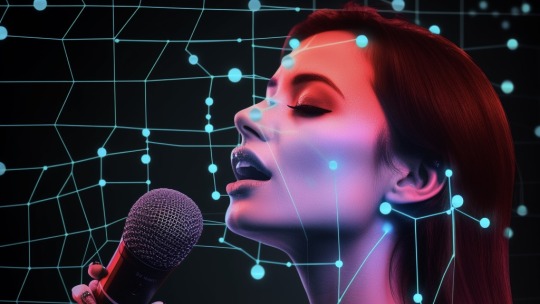
Overall, the development of this new tool is a significant event that can potentially change the music industry and how content is created on YouTube. It is important to monitor the development of the tool and to ensure that it is used in a responsible and ethical way.
#YouTube AI tool#famous artists' voices#creators#music industry#content creation#copyright infringement#deepfakes#democratize music creation#new and innovative music#personalized music experiences#music consumption#responsible and ethical use of AI#music technology#artificial intelligence#machine learning#deep learning#future of music#future of content creation#ethics of AI#copyright law#MusicTech#musiclife#productionmusic#musiccomposer#gamecomposer#musiccomposerformedia#musictech#musictechnology#musicproducer
0 notes
Text
Virgin Galactic Set to Launch its First Commercial Rocket Plane Spaceflight
🚀 Exciting News! Virgin Galactic gears up for first commercial rocket plane spaceflight, revolutionizing space tourism. Stay tuned! 🌌 #VirginGalactic #SpaceTourism
Image: Virgin Galactic Exciting news for space enthusiasts and adventurers alike! Virgin Galactic, the innovative space tourism company founded by Sir Richard Branson, has announced its highly anticipated first commercial rocket plane spaceflight. This milestone event marks a significant step towards the realization of commercial space travel. With Galactic 01 ready for launch, let’s delve into…

View On WordPress
#adventure#astronauts#commercial rocket plane#commercial space travel#democratization of space#Earth from space#Galactic 01 Crew#Innovation#safety#space exploration#space tourism#spaceflight#Unity spacecraft#Virgin Galactic#VMS Eve#weightlessness
1 note
·
View note